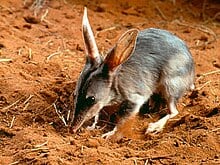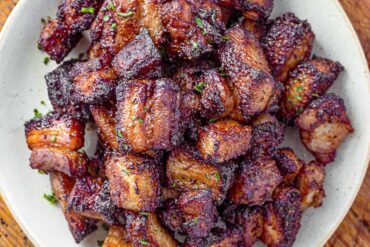Bounce into the World of Bilbies: A Guide for Curious Parents and Kids
Welcome, adventurous families! Are you ready to explore the whimsical universe of one of Australia’s most endearing marsupials? If you’re seeking to instill a sense of wonder and responsibility towards wildlife in your little ones, you’re in the right place. Embrace the journey through the captivating life of the bilby, and let’s encourage our children to become heroes in conservation efforts!
What Is a Bilby?
At first glance, you might confuse a bilby with a rabbit due to its long ears and snuggly appearance. But don’t be fooled – the bilby, also known as ‘Macrotis lagotis’, is a nocturnal marsupial native to Australia. Characterized by their soft bluish-grey fur, long pinkish ears, and distinctive black and white tails, bilbies are an iconic symbol of Australia’s unique fauna.
Why Are Bilbies Important?
Bilbies play an integral role in their ecosystem. As burrowers, they turn up the soil, which helps to aerate it and promote the growth of vegetation. This activity benefits other species in the arid areas they inhabit. But there’s a sad truth parents and kids alike should be aware of: Bilbies are also an endangered species. Learning about them is the first step in helping to secure their future.
The Fascinating Life of Bilbies
Think bilbies are just another critter? Think again! They have some amazing adaptations that help them thrive in the harsh Australian outback. From their impressive digging abilities to their acute sense of hearing and smell, which they rely on to find food and dodge predators, the bilby’s life is full of surprises. Engaging tales of the bilby’s existence will not only entertain your children but also enrich their knowledge of biodiversity.
Engage Your Kids: Bilby Fun Facts
- Did you know that a bilby’s pouch faces backwards? This keeps the dirt out while they dig!
- Bilbies have a varied diet – they love insects, seeds, bulbs, and even small animals.
- Their ears are not just cute; they radiate heat to help bilbies stay cool in the desert heat.
- Bilbies can live up to 7 years in the wild, which is a long time for such small creatures!
How Can Families Help in Bilby Conservation?
Empowering families starts with awareness. Parents can involve their kids in conservation efforts through educational activities and involvement in community initiatives. Here are a few ways you and your little environmentalists can contribute:
- Participate in local conservation programs and fundraisers.
- Support organizations working to protect bilbies and their habitats.
- Create bilby-themed art projects that raise awareness in your community.
- Research and adopt sustainable practices at home that benefit the environment at large.
By taking these enthusiastic leaps toward conservation, you foster a nurturing environment where your children will grow up valuing the world’s biodiversity and become motivated to protect it into their adulthood. Let’s hop to it, families! The bilbies are depending on us!

5 Things Parents Should Know in Preparing for Bilby Day
Getting ready for Bilby Day is a fantastic opportunity to engage your family in wildlife conservation. Here are five key things to remember:
- Understanding Bilby Behavior: Bilbies are nocturnal creatures, so organize activities during dusk or in the evening to align with their natural habits. This can create a more authentic experience for the kids.
- Educational Resources: Collect books, documentaries, and online resources in advance. Knowledge of bilby biology and their environmental threats will make for informative and engaging conversations.
- Conservation-Focused Activities: Plan activities that mirror real-world conservation tasks. For example, you can simulate bilby burrow-making or seed planting, giving kids a hands-on understanding of bilby habitat needs.
- Connect with Wildlife Groups: Find local wildlife groups or communities that focus on Australian animals. Joining their Bilby Day events or fundraisers can offer more structured activities and connect your family with a broader conservation network.
- Sustainable Practices at Home: Introduce easy, sustainable practices in your home, such as recycling or composting. Relate these actions to how they help protect animals like the bilby, making the connection between daily actions and global conservation.
Keeping the Momentum Going: Post-Bilby Day Actions
Conservation doesn’t end once Bilby Day is over. Keep the engagement alive with post-event activities. You could start a family ‘conservation corner’ where ideas and plans can be made to support wildlife. Remember, small changes at home can contribute to broader conservation impacts globally.
Whether it’s adopting a bilby through a wildlife foundation, starting a ‘Bilbies’ Friends’ club at your child’s school, or even dedicating a corner of your backyard to growing native Australian plants, the post-Bilby Day momentum can have long-lasting effects.
Wrap up the Day with Reflection
After a fun-filled day of learning and activities, take some time to reflect with your kids. Discuss what you’ve learned about bilbies, why they are important, and what your family can do to help. This helps consolidate the knowledge and passion for bilby conservation in your children’s hearts and minds.
Bilby Day is more than just a day on the calendar; it’s a stepping stone towards a lifelong commitment to conservation. With your guidance and support, your family can make a meaningful difference. So let’s jump in, full of enthusiasm and ready to make positive changes for our furry friends down under!
For more great fun click here. For more information see here
Disclaimer
The articles available via our website provide general information only and we strongly urge readers to exercise caution and conduct their own thorough research and fact-checking. The information presented should not be taken as absolute truth, and, to the maximum extent permitted by law, we will not be held liable for any inaccuracies or errors in the content. It is essential for individuals to independently verify and validate the information before making any decisions or taking any actions based on the articles.




